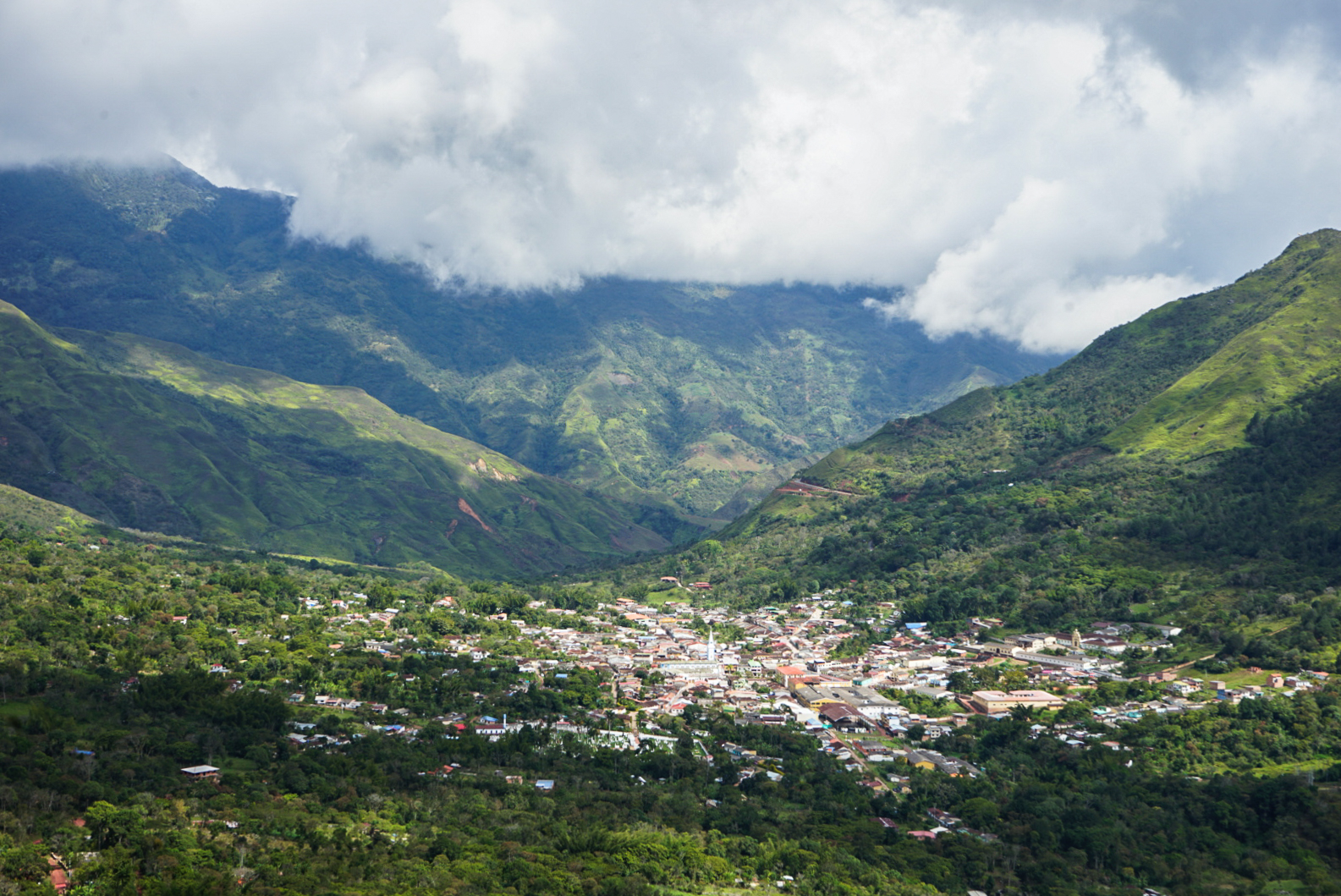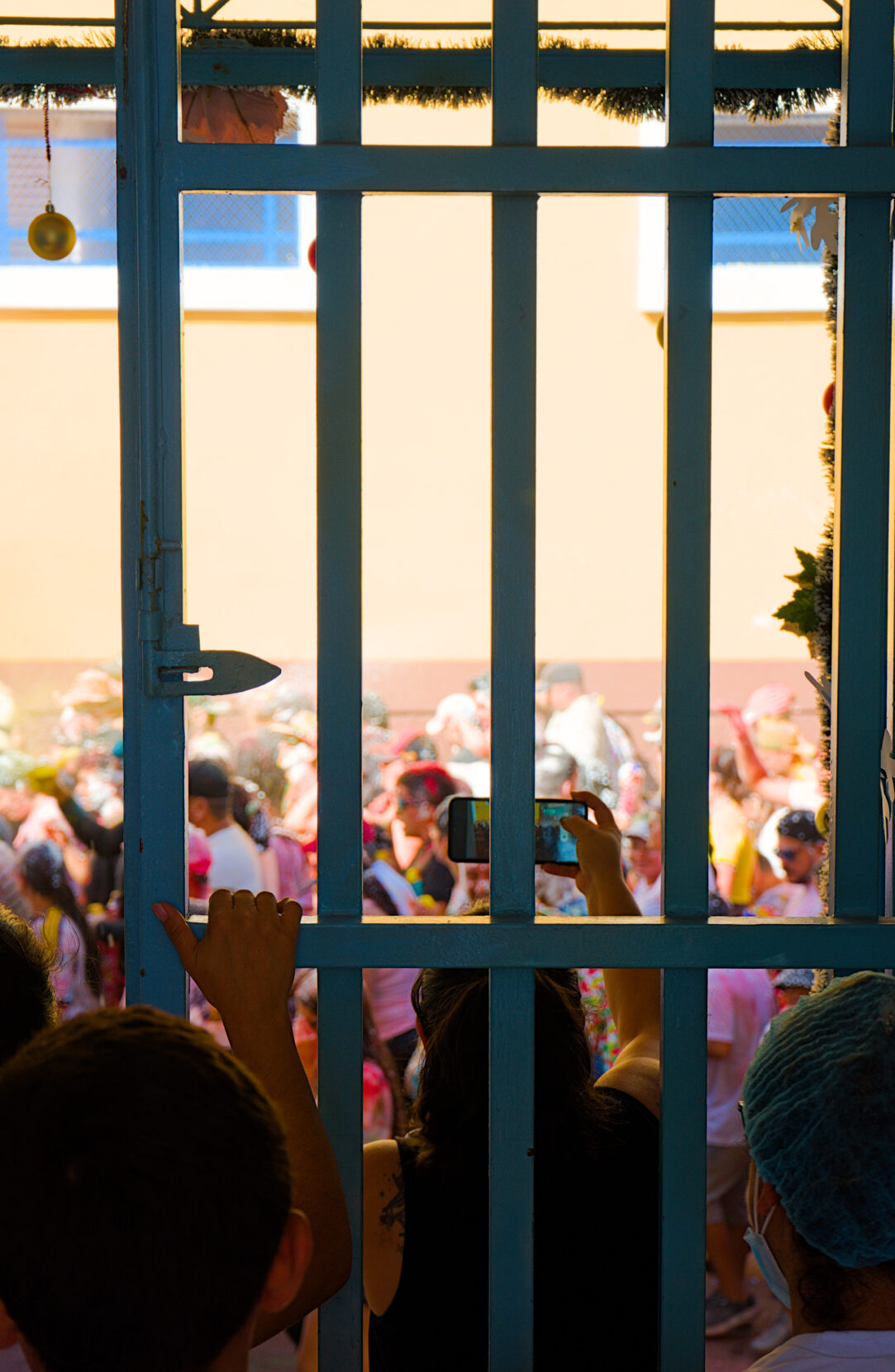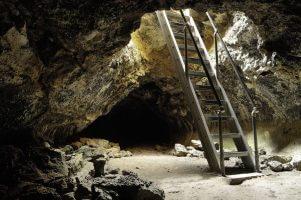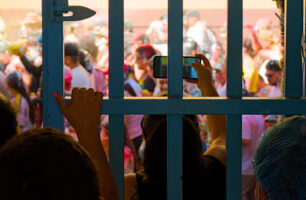Support Hidden Compass
Our articles are crafted by humans (not generative AI). Support Team Human with a contribution!
Photography and additional reporting for this story provided by Douwe den Held.
For two days, we battle off-road mountain passes through the jungle. Below us, the Suárez River cuts through the green swells of Colombia’s Eastern Cordillera. The rising sun caresses the water’s surface, sending clouds of condensation into the air.
Our bikes, loaded with gear for a year’s journey, slip and slide on the clay-covered rocks. By 10 a.m., the merciless heat and humidity have already sapped my energy, making every pedal rotation a slog. Sweat soaks through my long-sleeve shirt.
My partner, Douwe, and I are journalists on a multi-year bicycle journey from Colombia to Argentina through the Andes. Often we wile away the hours by chatting, but on this climb we are silent, focused only on the next hundred meters, then the next — and the next.
As we turn a corner, the red clay path becomes cobblestone, opening onto haphazard rows of small, red-tile-roofed houses. The scene reminds us of a medieval European village — or even, we can’t help but remark, the fictional town of Macondo in 100 Years of Solitude — the masterpiece of magical realism by Gabriel García Márquez that defines Colombian literature both here and abroad.
The air is fresher here, at more than 5,000 feet in altitude, and there are enough trees offering respite to make the sun feel almost pleasant now. With fewer than 4,000 people, this town, Contratación, is small enough to barely appear on some maps. It is meant to be a stopover on the larger trip, nothing more.
But there’s a gentleness to the way people move through the town, greeting each other. There’s also an air of mystery that we can’t quite place, and it intrigues us to stay.

Nestled high in the mountains of Colombia, the town of Contratación provided journalists Anastasia Austin and Douwe den Held a much needed respite. Photo: Douwe den Held.
~~
Nearly two centuries earlier, another group of travelers struggled through this same jungle, their bodies weakened not just by the heat but by a disease that marked them as “lepers,” the name that the townspeople of Socorro, 30 miles away, called after them as they drove them out.
The outcasts tried to settle on the banks of the Suarez River, down in the valley. But the same heat and humidity that hung over our climb made the pain of their skin sores unbearable.
Desperate, the settlers sent the healthiest among them on a mission: to find a place cut off from the world.
What they found was a forested valley where Contratación, a tiny trade post, stood protected by peaks on all sides. It was a place so remote that even the air felt different — cleaner, cooler, a balm to their ravaged bodies.
Gradually, they moved the rest of the colony here, carrying those in the latest stages of disease on stretchers over the same rough mountain passes we struggled to cross on bikes. Together, they built a refuge high in the mountains, a place where those with leprosy could live free from fear, its remoteness a barrier to rejection.
Sequestered from society, though, a devastating duality took root.
~~
In 1873, Gerhard Armauer Hansen, a young Norwegian doctor, peered through his newly acquired microscope at a small, rod-shaped bacterium that would later be named leprosy bacillus. This bacterium, he learned, spreads leprosy through droplets from the nose and mouth.
His discovery finally offered a rational explanation for a devastating disease that people had attributed to God’s wrath since ancient times. Without effective treatment, the disease wreaks havoc on a person’s skin and peripheral nerves, causing a host of symptoms and complications — skin lesions and ulcers, weakness and loss of feeling, and even paralysis, blindness, and a clawing inward of hands and feet.
“I was in constant pain.”
Hansen’s scientific breakthrough helped launch the bacteriological revolution in medicine. It also paved the way for nearly a century of mandated quarantine and surveillance worldwide.
Out of fear of the contagion, the Colombian government isolated leprosy patients by law, mandating the detention and institutional confinement of anyone diagnosed.
Contratación, already recognized as a “leper colony,” became a de facto open-air prison guarded at all access points. The government confined existing residents and forcibly transported others there. They also issued the town its own currency to avoid spreading the disease.
Intended as a refuge for the sick, Contratación became a sacrifice for the well-being of the healthy. An administrator who visited in 1864 documented the dire conditions, writing that he found “No beds, no furniture, nor blankets to hide their nakedness. Nothing more than a roof and walls where misery believes to find shelter against the elements.”
~~
Revived by lunch, Douwe and I hike into the surrounding mountains, following a stone slab stairway into the clouds. Thick mist envelops everything as steps emerge, one by one, alongside tall pines.
Made of carefully matched stones, each of these perfect steps was hand-built by the very people sent here because of their illness, which often claimed their limbs. We follow the winding stairwell for over a mile to the Santuario María Auxiliadora, a shrine to the town’s patron saint — the Virgin Mary — built in grand European style.
The late 19th century brought priests of the Salesian order from Italy who sought out Contratación to care for the sick. A plaque on the monument proclaims gratitude for the church’s work with the community. Their influence created this apex of colonial architecture amid the Colombian Andes.
But alongside European aesthetics came a rigid morality. Social rules under the Salesians were set in stone, too.
In the shadow of the shrine, we notice a dirt track leading away from the stone path, farther into the wilderness. The trail is rough, unmarked, so easy to miss that it almost feels hidden. It deviates from the brilliance that has been so carefully erected here.
~~
“This town was a place of much pain, much sadness,” Dr. Norma Constanza tells me in her cramped office in Contratación, at the front of a large complex of old hospital buildings. She makes time for me between urgent calls and meetings. It is New Year’s Eve, and people wander in and back out again, a clatter of patients and nurses preparing for the festivities.
Despite the commotion, the doctor calmly holds my gaze, determined to make me understand the suffering of the past.
In the early 20th century, the Colombian government banned parents with leprosy from raising uninfected children. Catholic missionaries ran “orphanages” in neighboring towns, where children born in Contratación were taken, often by force.
No one knows precisely how many children were abducted, Dr. Constanza tells me. But vintage black-and-white photographs document hundreds of young boys and girls posing in front of orphanages. Whole families were destroyed, Dr. Constanza’s among them. Her grandparents had been exiled in Contratación.
“My uncles were eight or nine years old when they were taken from my grandparents,” she says. “Many kids were even younger.”
In many cases, that separation did irreparable damage. “My uncles,” Dr. Constanza continues, “they never came back.”
The dirt path we had seen at the shrine leads to a bridge — one those with leprosy were forbidden from crossing. There, parents were forced to say goodbye to their children. The story goes that they cried and sighed with grief so much that the bridge became known as El Puente de Suspiros, the Bridge of Sighs.
Heartbreakingly, the bridge has a twin — both in name and history — outside Agua de Dios, one of Colombia’s other two historic leper colonies.
~~
The scene reminds us of … the fictional town of Macondo in 100 Years of Solitude — the masterpiece of magical realism by Gabriel García Márquez that defines Colombian literature.
Decades into this cruel policy, an earthquake damaged one of the orphanages. The head priest told the children to run down to Contratación and find their families. Many kids never knew their parents, though, and their religious education had instilled them with an image of a blonde, blue-eyed Virgin Mary as their mother.
“So when they met their real mothers — women with dark skin often deformed by their disease — it was a brutal shock,” explains Wilson Raúl, a local historian.
A 45-year-old with youthful eyes, Raúl describes the clashing realities of Contratación as a living example of magical realism.
I consider his point as I take in my surroundings. A serene, covered garden encompasses the patio where we sit, awash in a blue reflection from the small pool nearby. Raúl has turned this place, his childhood home, into a boutique hotel. It’s the only of its kind in a town that sees few tourists despite its abundant natural beauty.
Sitting across from me at a wooden table, Raúl’s suntanned face breaks into a wide grin as he shows me a magazine from his university days, one of 11 issues he produced while studying in the departmental capital of Bucaramanga. The beautifully illustrated magazine shows Contratación laughing, grieving, surviving — on its own terms.
“This is how we started telling our stories,” he says with pride.
Then he shows me the books he’s authored: collections of stories that only, as he puts it, “children of leprosy patients can tell.”
~~
The mountain air carried the scent of wet stone as Pedro Emilio Carreño climbed toward Contratación in 1939. At 27, he walked alone — six months after refusing to accompany his disease-stricken mother to this very place.
Now the law marched him there, past police checkpoints where his civil rights ended. Cobblestone streets awaited, built by exiles paying fines for drinking liquor, their hammers ringing like funeral bells.
The colony organized itself by origin. Those from Zapatoca, as Pedro was, welcomed and helped others from there. Those from Norte de Santander, as his future bride Noemí was, did the same. In that way, they formed tiny self-segregated communities that dotted Contratación.
Living conditions were hard and resources scarce, yet Pedro and Noemí managed to find each other. Their 1946 wedding was a reaffirmation of life — a message of resilience they would pass on to their son, José Raúl.
~~
By the 1960s, the stone streets of Contratación were no longer under guard as 14-year-old Mariela Velasco delivered food from her grandmother’s restaurant. Though Mariela was healthy, her father had sent her here as a child to live with her Grandma Rosa, a woman who’d evaded the disease even after decades of being married to a man with leprosy.
Scientists had discovered the disease was not nearly as contagious as previously believed, and the Colombian government abolished mandatory isolation policies in 1961. Still, many of Contratación’s citizens remained homebound by disability, some unable to move around easily. They relied on “takeout” from restaurants and shops like Rosa’s.
On that night, Mariela’s delivery was destined for the home of 15-year-old José Raúl, whose early treatment had left no visible scars.
“My mother had many suitors, but she chose the one — the only one — sick with leprosy,” Raúl tells me. “Why? Because she fell in love with my father.”
Their courtship unfolded against the backdrop of ongoing stigma. When Raúl was born almost 20 years later, his parents falsely listed Socorro as his birthplace.
“Parents often did this to protect their children, so doors wouldn’t close on them,” Raúl explains.
~~
Douwe and I have arrived at a special time, Raúl says, his green eyes twinkling: during the December festivities, known as the Carnival of Matachita. As if on cue, the sound of an excited crowd floats in through the open front gate.
Outside, teens roam the streets in Italian carnival masks and Halloween costumes, holding strange flesh-colored balloons.
These are air-filled cow stomachs, and the teens are headed for the town’s sports field, where they will assemble with the rest of the town and, when music starts, play a unique game of tag. The townspeople will try to run across the field without catching a beating from the youths’ balloons, which leave bruises and a penetrating smell.
But that’s later. For now, they roam around town making menacing gestures that, judging by the laughter of the townspeople, are all in good fun.
The unusual tradition exemplifies the cultural exchange that spread freely here, a blend of the regional traditions of the exiled with the art and literature of the European priests.
“Art became a powerful tool of hope in a town closed off and condemned to isolation,” Raúl says, explaining that he grew up during a time when few Colombian cities had theaters, but in Contratación, they had one that put on a different show every month. “Even today, every other person here is a painter, a musician, a dancer — there’s so much artistic talent.”
But even this source of pride carries the weight of history. Musical talent, in particular, has long been valued here — once as a form of leverage. Musicians’ children rarely ended up in orphanages because their parents’ talents were valued at parties hosted by local officials.
The Carnival of Matachita is celebrated in other villages, Raúl says, but they refuse to acknowledge that the tradition comes from Contratación. Anything associated with the town is still seen as contaminated.
~~
Intended as a refuge for the sick, Contratación became a sacrifice for the well-being of the healthy.
Since we had arrived in Contratación, we had been following ghosts of the past. Yet each encounter pulled us toward the Sanatorium, an active treatment center, to meet the patients of today.
Angela, a woman in her late thirties, stands behind a seated friend, pleating colorful bands into her hair. Laughing and chatting, the two women resemble teenagers getting ready for a school dance. In truth, the setting — an airy, Spanish Colonial-style building — reminds me of my high school.
Angela’s hands move quickly, expertly, through her friend’s hair, as she tells me her story.
Angela was born in Colombia but moved to bordering Venezuela when she was 18 to be with her first husband, a drunk she left when she was 27. To make ends meet, she worked at a jeans factory, where she met her second husband and, doctors now believe, caught Hansen’s disease, as leprosy is known today. It’s hard to say for sure, as the onset of symptoms can take up to 10 years, but the disease is more widespread there.
In 2015, they moved back to Colombia. Five years later, Angela’s eyelashes and eyebrows fell out.
“I didn’t think anything of it. I mean, I can draw on my eyebrows, and if I want eyelashes, well, I can put on fake ones, can’t I?” she says.
Next, ulcers opened on her feet. But they were small, and doctors diagnosed them as fungus. The ulcers didn’t respond to any of the prescribed treatments, but they also didn’t grow. Not until Angela tried a “natural” remedy: salicylic acid.
“[The acid] burned the ulcers, opening up wounds, and these became infected,” Angela remembers. “It was hell.”
From there, Angela’s health only worsened. As the ulcers spread across her entire leg, she began spending as much time in clinics as at home, transferred from doctor to doctor. She was misdiagnosed a dozen times. Treatments for skin conditions she didn’t have made her ulcers unbearable.
“I had no life, I had no peace,” she says. “I was in constant pain.”

Angela (standing) came to Contratación to treat her worsening case of Hansen’s disease. In the town, she found both community and isolation. Photo: Douwe den Held.
~~
Every patient I spoke to at the Sanatorium told some version of Angela’s story: misdiagnosis, confusion, delays of crucial treatment, and pain.
“Doctors in Colombia don’t know anything about leprosy, so they don’t recognize it,” Dr. Constanza tells me. “By the time patients are correctly diagnosed, they’ve often suffered for years.”
The Sanatorium is one of Colombia’s two centers for treatment of Hansen’s disease, with early detection among its primary goals. Medical teams travel across Colombia, searching for cases in the impoverished communities where leprosy is most likely to spread.
“Leprosy thrives in overcrowded housing, dirt floors, inadequate roofs. These are the environments where the disease spreads most easily,” Dr. Constanza tells me. “We look for people with long-lasting skin rashes that don’t respond to treatment. If we find the bacteria early, we can treat it before it causes disability.”
But resources are limited, and Dr. Constanza and her colleagues can only do so much without better training for doctors.
“In my university, we didn’t learn about it at all,” she says. “Leprosy is treated as a distant, almost mythical disease.” That makes it hard to recognize.
Though the World Health Organization declared its elimination as a global public health goal in the year 2000, Hansen’s disease remains “one of the world’s leading causes of preventable disability,” according to the Leprosy Mission International, an NGO. Officially classified as a Neglected Tropical Disease (NTD), around 175,000 new cases are reported each year.
~~
At the Sanatorium, Angela’s ulcers have diminished, again contained to only her feet. She’s also found companionship and support. “People here are very approachable, very kind,” she tells me, pointing to her friend, whose hair is now almost finished, and laughing a bit.
But when I ask Angela to tell me more about her arrival, a sudden sob escapes her, and the spell is broken. This is not the schoolgirl I had imagined but a heartbroken mother trying to hold it together.
Parents were forced to say goodbye to their children. The story goes that they cried and sighed with grief so much that the bridge became known as El Puente de Suspiros.
Angela’s condition had worsened, and her doctors made the decision to move her to the specialized hospital in Contratación, at least a 12-hour drive from her home. She didn’t even have an opportunity to gather clothes, she recounts, nor say goodbye to her family.
Tears now stream down her face, her friend’s hair forgotten.
Angela arrived in Contratación in early November, just before the start of the holiday season — the most important part of the year in Colombia’s religious and family-centered culture.
“I have small kids. Usually, I take them to Christmas prayers and gatherings, and make the house festive,” Angela tells me. “But this year, they did nothing.”
She doesn’t know when she will see her three children again.
~~
In every corner of the Sanatorium, patients tell me about the brutal rejection they experienced in their hometowns. After their diagnosis, friends disappeared, lovers left, and even cafes left their coffees at the door, refusing them even the slightest bit of human contact.
Such dehumanization causes distress — from feelings of fear and shame to depression and anxiety — that can exacerbate pain and inhibit symptom management.
The injustice of it all is that it is difficult to become infected with Hansen’s disease. Genetic studies in recent decades have revealed that an astonishing 95 percent of people have natural immunity. And even for those susceptible to the disease, contracting it is not easy.
“It’s not that you touch a leprosy patient and catch the disease. No. It’s a matter of close contact over many years,” Dr. Constanza says. “Even among those of us who work directly with patients, it’s very rare to get sick.”
Residents of Contratación, who grew up with and around leprosy, knew this from experience long before any genetic studies. Fear of patients with the disease ceased to exist here long ago, if it ever existed in the first place. Without that stigma, I notice that most of the patients and residents I meet call themselves “lepers,” a term that the Leprosy Mission International calls “offensive” and Merriam-Webster defines as a social pariah. But here, the term is used without judgment.
In contrast to their treatment in the outside world, when patients arrive in Contratación, a warm, accepting community greets them, eager to shake hands and give hugs. This, as well as the medication, allows them to begin to heal.
And so the Sanatorium remains a paradox: a vital place of healing still unnecessarily separated from society. The government subsidizes care at the Sanatorium, and many patients receive disability pay. Still, most remain unable to afford the trip out of the remote Andean town to see their loved ones who, in turn, cannot afford to come here. The isolation of patients here continues, enforced not by government policy but by poverty.
Universally, when I ask those being treated for leprosy in Contratación what their New Year’s wish is, they respond, “to see my family again.”
~~
I hike into the surrounding mountains, following a stone slab stairway into the clouds. Thick mist envelops everything as steps emerge, one by one, alongside tall pines.
Back in the town square, the celebratory energy is contagious. A man in his 70s hawks homemade ice cream, and families and friend groups gather in little clans to stake out spots along the sidewalk for the coming Matachita day parade.
It seems as if every living creature in Contratación is either watching or participating. Even the stray dogs join in.
The parade itself is impressive, led by important town figures decked out as characters from 100 Years of Solitude. They are followed by traditional and modern dance performances. Contratación has no dance school: These dancers are self-organized, creating impressive choreography and practicing every day in the local school.
As I watch them go by, I think about how the joy before my eyes exists despite the outside discrimination that continues to haunt these people. Something that Raúl said comes back to me.
“It’s like a social experiment,” he said. “What happens if you take thousands of people, take away their civil rights, forbid them to marry, make them use a different currency, and surround their village with police guards? And what happened was that people, who were sent here to die, decided to throw a party instead.”

On the streets of the city where the most vulnerable were sent to live, residents and patients find reasons to celebrate. Photo: Douwe den Held.
Anastasia Austin
Anastasia Austin is a freelance investigative journalist cycling the Andes and reporting from its far-flung corners.



